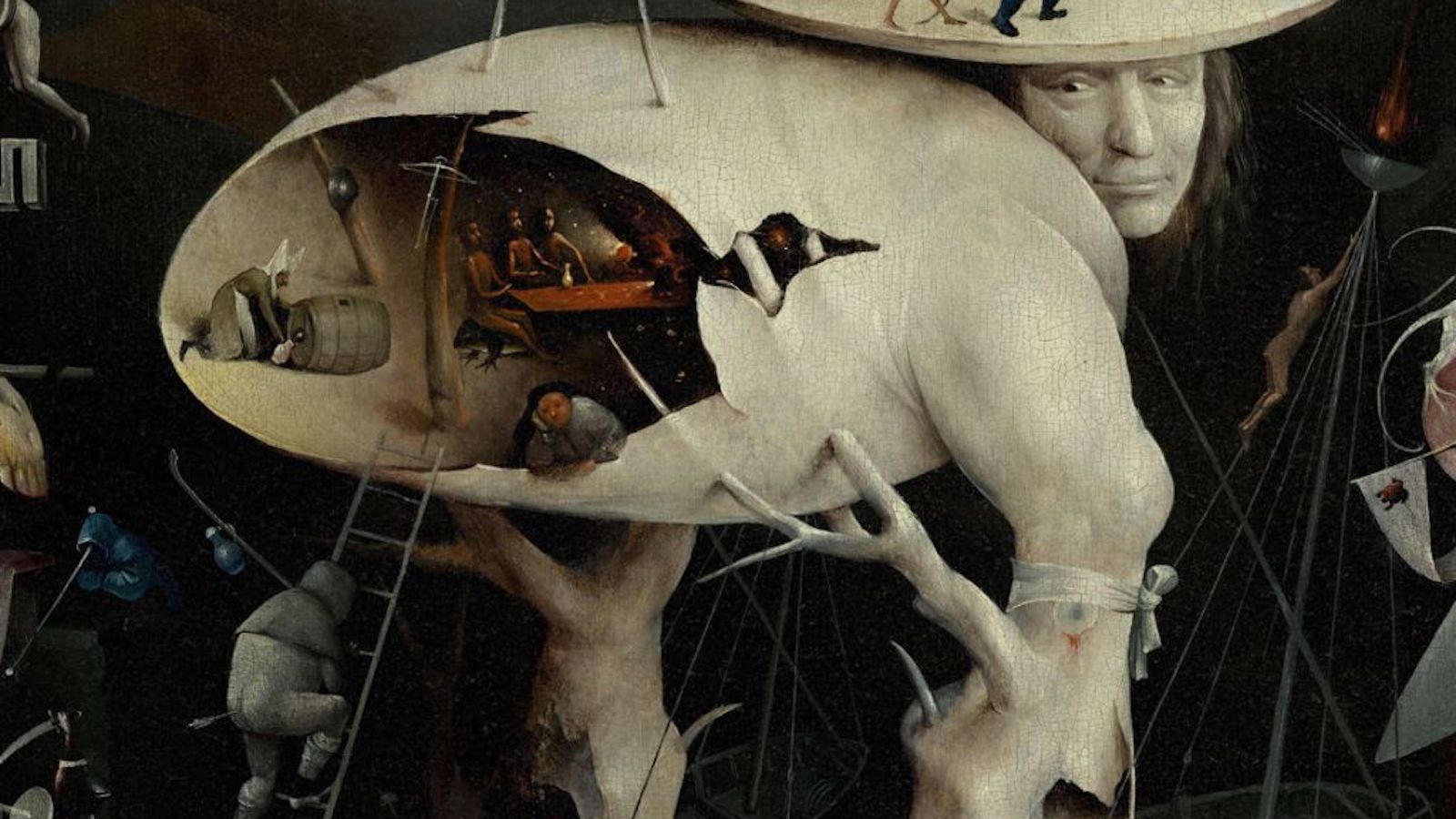Before the internet… before television… when people read, sure, but the printing press was still a new thing. People had to get their innate desire for horror different ways. And gosh darnit, I think plenty of times good ol’ Sunday church service was one of the main ways to get it. Religion is full of horrors. When it comes to horror art, that meant epic religious paintings that would boggle the mind. Cue Hieronymus Bosch and his Garden of Earthly Delights.
A garden of earthly delights doesn’t sound so bad. Well, it’s never all rainbows and candy canes when it comes to the Bible.
Painted between 1490-1510 Hieronymus Bosch’s Garden of Earthly Delights is a triptych oil painting that is generally thought to depict heaven, earth and its many carnal pleasures, and of course hell and what those carnal pleasures lead to. And it is fascinating in so many ways.
[image lightbox=”1″ caption=”Hieronymus Bosch, Garden of Earthly Delights”]https://www.scarystudies.com/wp-content/uploads/2021/03/the-garden-of-earthly-delights-bosch-0-1-scaled.jpg[/image]As you can tell, there is a whole lot going on in this painting. For hundreds of years people have dissected the massive amounts of symbolism strewn about on the canvas. It doesn’t take long to find a lot of sexual symbolism, so the broad consensus is that it is largely about lust. But it takes its time to factor in the other deadly sins. As art historian Ludwig von Baldass wrote, the painting shows “how sin came into the world through the Creation of Eve, how fleshly lusts spread over the entire earth, promoting all the Deadly Sins, and how this necessarily leads straight to Hell.”
[image lightbox=”1″ caption=”Hieronymus Bosch, Garden of Earthly Delights”]https://www.scarystudies.com/wp-content/uploads/2021/03/the-garden-of-earthly-delights-bosch-1-1.jpg[/image]Looking at Hell in the Garden of Earthly Delights, we see many of the traditional things we might see in a classic painting. But we see a lot more. We see armies and war, we see a lake of blood, we see people toiling away in whatever labor exists in Hell.
But we also see a single figure, standing in a brightly lit room, with glowing rays piercing from behind the single room. It is ominous. And it makes us think there is a lot more going on here.
[image lightbox=”1″ caption=”Hieronymus Bosch, Garden of Earthly Delights”]https://www.scarystudies.com/wp-content/uploads/2021/03/the-garden-of-earthly-delights-bosch-2-1.jpg[/image]Looking at just a small section of Hell, we see that it is made up of massive amounts of detail… detail that shows who finds themselves there, and why. Among what can only be considered an army of naked men, we have one that has been stabbed in the back. And another man’s head is being cut off, while he is blindfolded. Another, he is covering his eyes, with a creature on his back, a head covering that is reminiscent of religious head adornment. I think generally the idea here is that although men find themselves in hell for the wars that were pitted on earth, many of them were merely pawns.
But yes, it’s also hard to escape all the sex. The unusual and phallic bagpipe. The many nudes and the consuming of fruits. To see the progression from heaven to hell, it is a degradation from virtuous and serene nudity to a hellscape of consumption and regurgitation in every orifice that is possible.
[image lightbox=”1″ caption=”Hieronymus Bosch, Garden of Earthly Delights”]https://www.scarystudies.com/wp-content/uploads/2021/03/the-garden-of-earthly-delights-bosch-4-1.jpg[/image]One of the centers of the painting, a bird. The bird is generally considered to be the “Prince of Hell” figure.
[image lightbox=”1″ caption=”Hieronymus Bosch, Garden of Earthly Delights”]https://www.scarystudies.com/wp-content/uploads/2021/03/the-garden-of-earthly-delights-bosch-3-1.jpg[/image]It is notable that he is on a throne, with a pot for a crown. In charge of hell, this prince only thinks of consumption, with even a cooking vessel upon his head. He is a symbol for the rich and powerful. Like a crow or vulture, only feasting on the death of others.
[blockquote footer=”Revelation 19:21″]And the remnant were slain with the sword of him that sat upon the horse, which sword proceeded out of his mouth: and all the fowls were filled with their flesh.[/blockquote]Overlooking the landscape found in Hieronymus Bosch’s Garden of Earthly Delights, it’s hard not to find a lot of interesting detail about what a particular culture and artist thought of hell. That’s what art that depicts horrors can do. Ultimately what we think about hell says a lot about who we are.
Last Updated on March 17, 2021.

